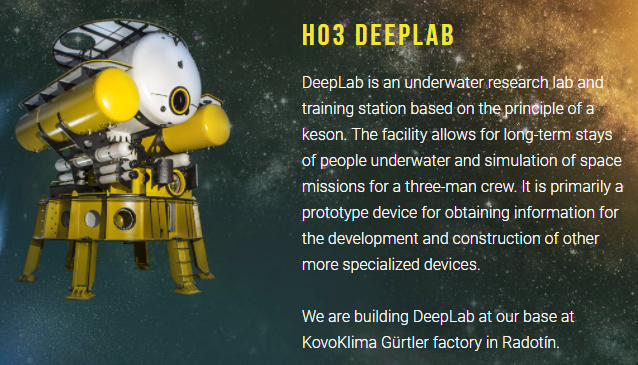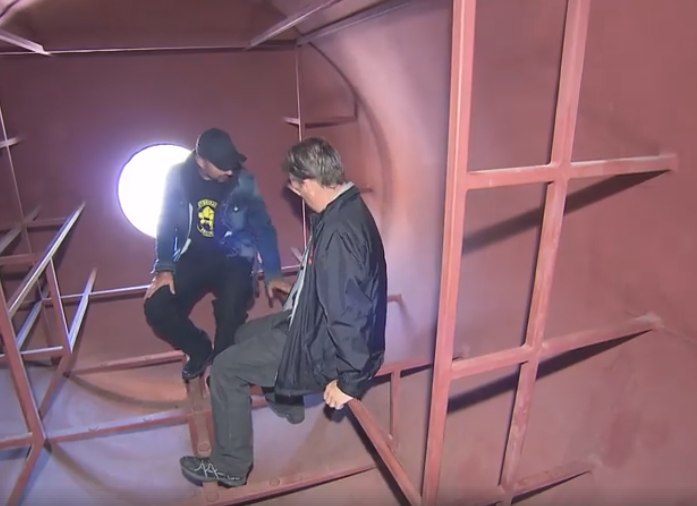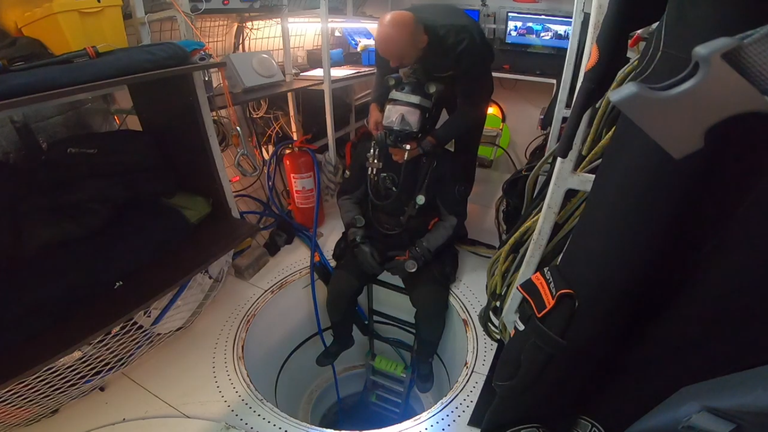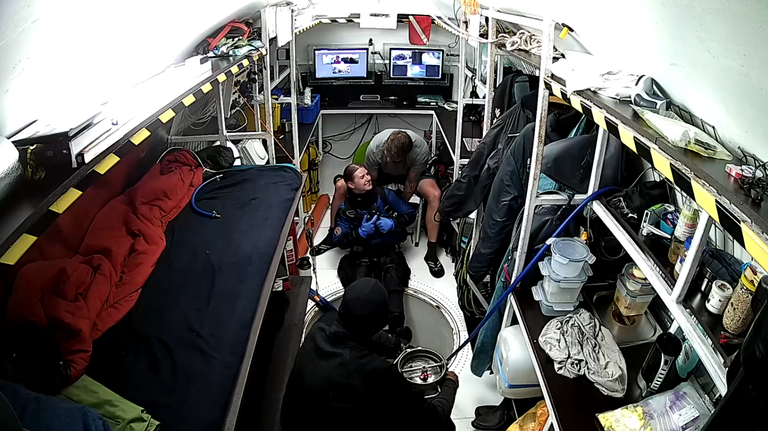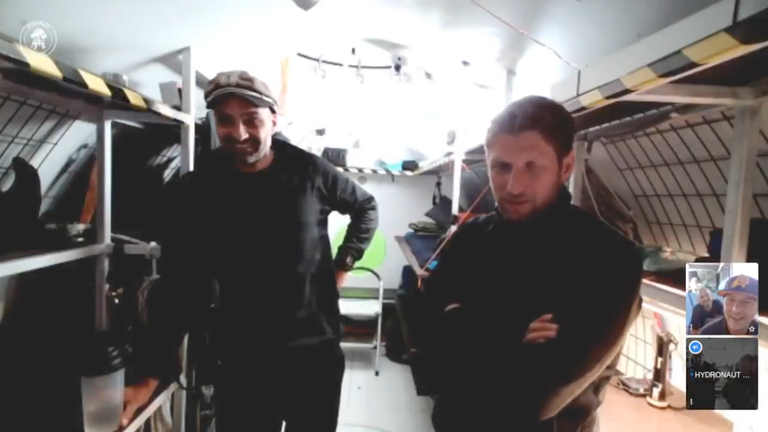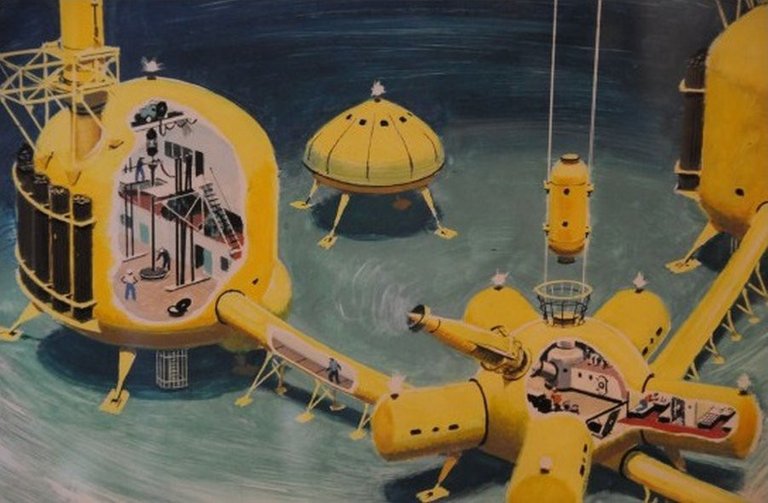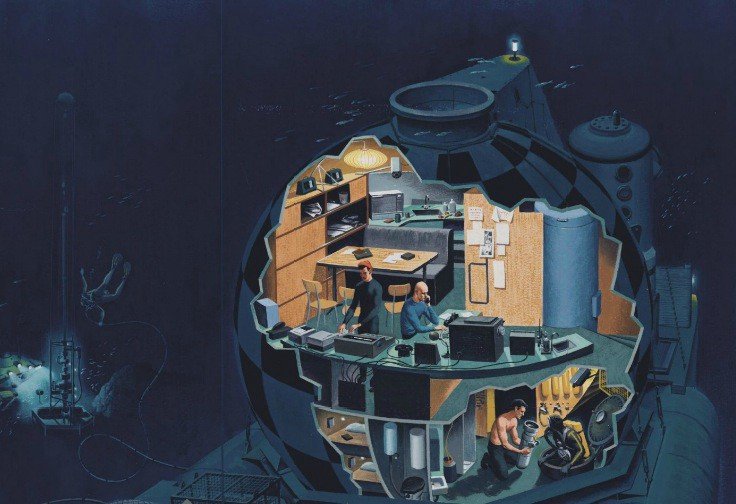Hydronaut, the Latest Undersea Research Station, Hits the Water
Long time followers may recall Project Hydronaut, as I reported on its construction a few years ago. Built on a shoestring budget by a diving club in the Czech Republic (now Czcechia), the Hydronaut H03 Deeplab is primarily intended as a demonstrator; The creators hope it will make the case to the ESA that a NEEMO style underwater astronaut training program would be a good use of taxpayer money.
If successful in their aims, the Hydronaut H03 Deeplab would be followed up by a much larger successor, the H01 Deephome. This two story submerged lab would borrow Deeplab’s basic design but expand the interior volume greatly, also modifying the ballast tanks, while adding an ISS style upward facing cupola for spectacular underwater views:
As yet, only the H03 Deeplab has actually been built. Considerably more austere than H01 Deephome, it lacks the amenities that make Deephome a home, such as a shower room, private sleeping quarters, a kitchenette and a chicken coop. Apparently a must-have in the Czech Republic, even underwater.
Construction completed in 2018 to much fanfare from the local media, as more or less everybody in that community knows of the project. The construction and surface support facilities were located adjacent to a flooded quarry for ease of deployment and operations. An open ocean habitat this is not, but then the Czech Republic is a land locked country, so they had to work with what was available.
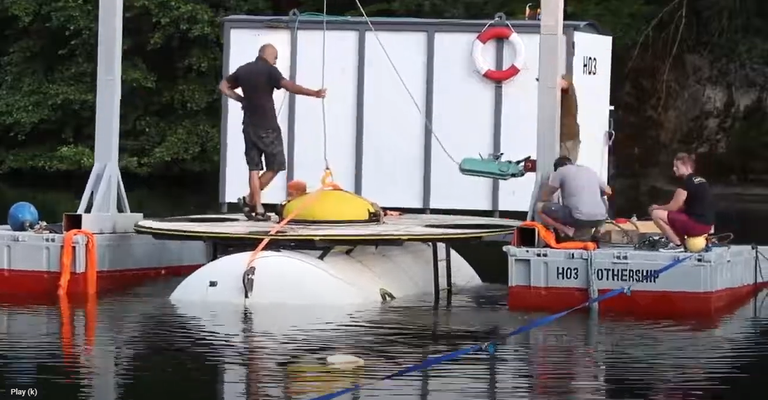
source
Sinking Hydronaut was an ordeal in itself. Though the structure was thoughtfully fitted with ballast tanks so that its buoyancy could be regulated as needed to make it float or sink, it is still a dangerous, tedious and complex process to move something weighing many tons from land into the water, to maneuver it to where you mean to sink it, and to emplace it safely and securely on the bottom. As you can see a specialized surface vessel was built to facilitate this goal, as was also the case for General Electric’s Tektite habitat in the 70s.
Once submerged and confirmed to be dry inside, the umbilical hookups were made with the surface support building so that air compressors could begin sending fresh air down, the power cable in the umbilical could send electricity for interior light, heat and dehumidification, and of course data so they could begin receiving the first live video feeds from the freshly emplaced underwater station.
Hydronaut H03 Deeplab is officially a two person habitat. It has two bunks and would really be unsuitable for use except by two same gendered heterosexual friends who were very, very comfortable with one another, given the cramped conditions and lack of privacy. Nevertheless on such a momentous occasion everybody involved wanted their turn inside the habitat. So they came and went, surfacing within their warm, dry bubble of air suspended beneath the waves by a steel cocoon.
As excitement died down the mission proper was able to get underway. It was my privilege to follow it while it happened, having watched this project very closely nearly since its inception. There isn’t a new underwater habitat project anywhere in the world I don’t know about, which is less impressive than it sounds given how infrequently new habitats get built. The rate is still faster than new developments in manned spaceflight though, such that I’ve found it more rewarding by far to be a sea nerd than it was to be a space nerd.
Living underwater has been a fantasy of mine from a young age. But as a ruthless pragmatist I can’t enjoy a fantasy which isn’t grounded in reality somewhat. Consequently I’ve been on a ten year long deep dive into this topic, if you’ll forgive the pun, studying why it’s such a rarity for habitats to get built, why they’re never permanent and to what degree underwater habitats could be made economically self-supporting.
The unfortunate truth is that there’s only a few activities that can be performed underwater at a sufficient profit to support the ongoing maintenance expenses of an underwater habitat, much less the initial outlay. They’re mariculture, science, tourism and mining. Though it would not be saturation habitats used in support of oceanic mining, but semi-mobile 1atm submarine-like labor platforms, as China is planning to use for mining the South China seabed.
So it would seem we won’t all be living in sprawling, beautiful undersea cities any time soon. There’s no economic rationale for it. If you want to live at sea, seasteading is a much cheaper approach which ticks nearly all the same boxes. However it is reasonable to expect that as humanity increasingly turns to oceanic resource development to source the additional food, metals and energy needed to meet the needs of a burgeoning global population, small underwater labor platforms will be part of how that happens.
A more sober and plausible expectation for the future of underwater dwellings then more closely resembles Seaquest than Bioshock. Compact, purpose-focused structures no larger than they need to be, likely no-frills on the inside as they are outside, designed to be easily moved from worksite to worksite. Not dissimilar from modern diving chambers except that they can be left in place for long periods without need of a support ship crewed by professionals collectively earning millions in hazard pay every day they’re out there.
This vision resembles pretty closely what Jacques Cousteau had in mind for Conshelf 3 before he did a 180 on his dream of underwater settlement, turned against the oil companies who financed his expensive habitat projects and dedicated the remainder of his life to environmental conservation.
It’s looking like the future we get will be a compromise between his original fantasy of vast undersea colonies where hundreds of families live fulltime, and the current minimalist approach of deploying divers to subsea worksites via tiny diving bells. That works great for short duration maintenance dives, not so much for long duration activities like mariculture or mining.
Which brings us, full circle, back to Hydronaut. Though purpose built as an astronaut trainer, it’s my belief that it closely represents the design philosophy we can expect to see in submerged labor platforms of the near future. Compact, efficient, easily moved and reused, supporting small teams of 2–4 divers performing the same amount of work it would require three times as many divers to accomplish if they were bounce diving from a boat.
Whether or not this future materializes, the successful submersion and operation of Hydronaut H03 Deephome remains an astonishing accomplishment and testament to the passion of everybody involved in this project. It’s brilliant, creative fanatics like them who bring the blue frontier closer to us all, step by step.

